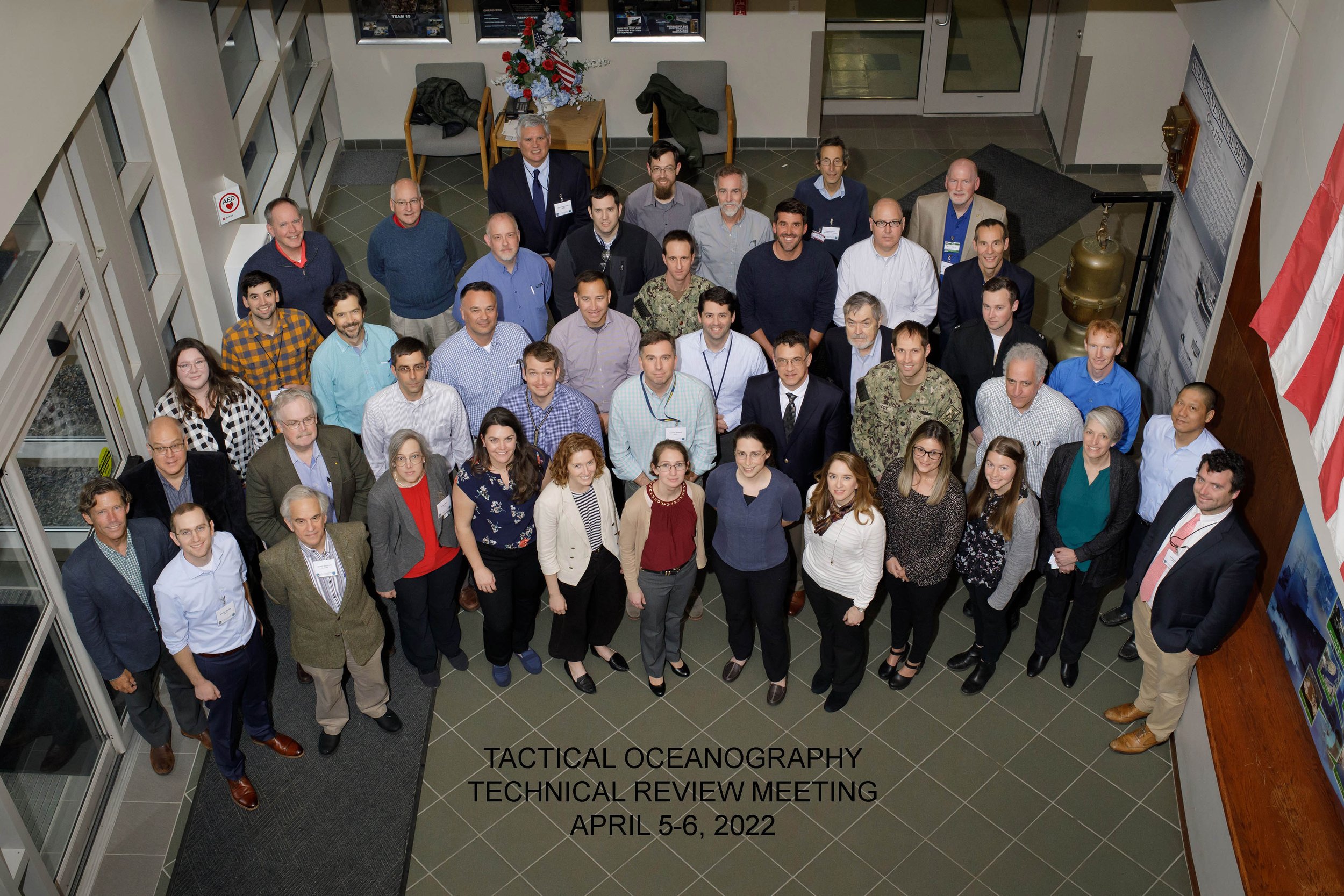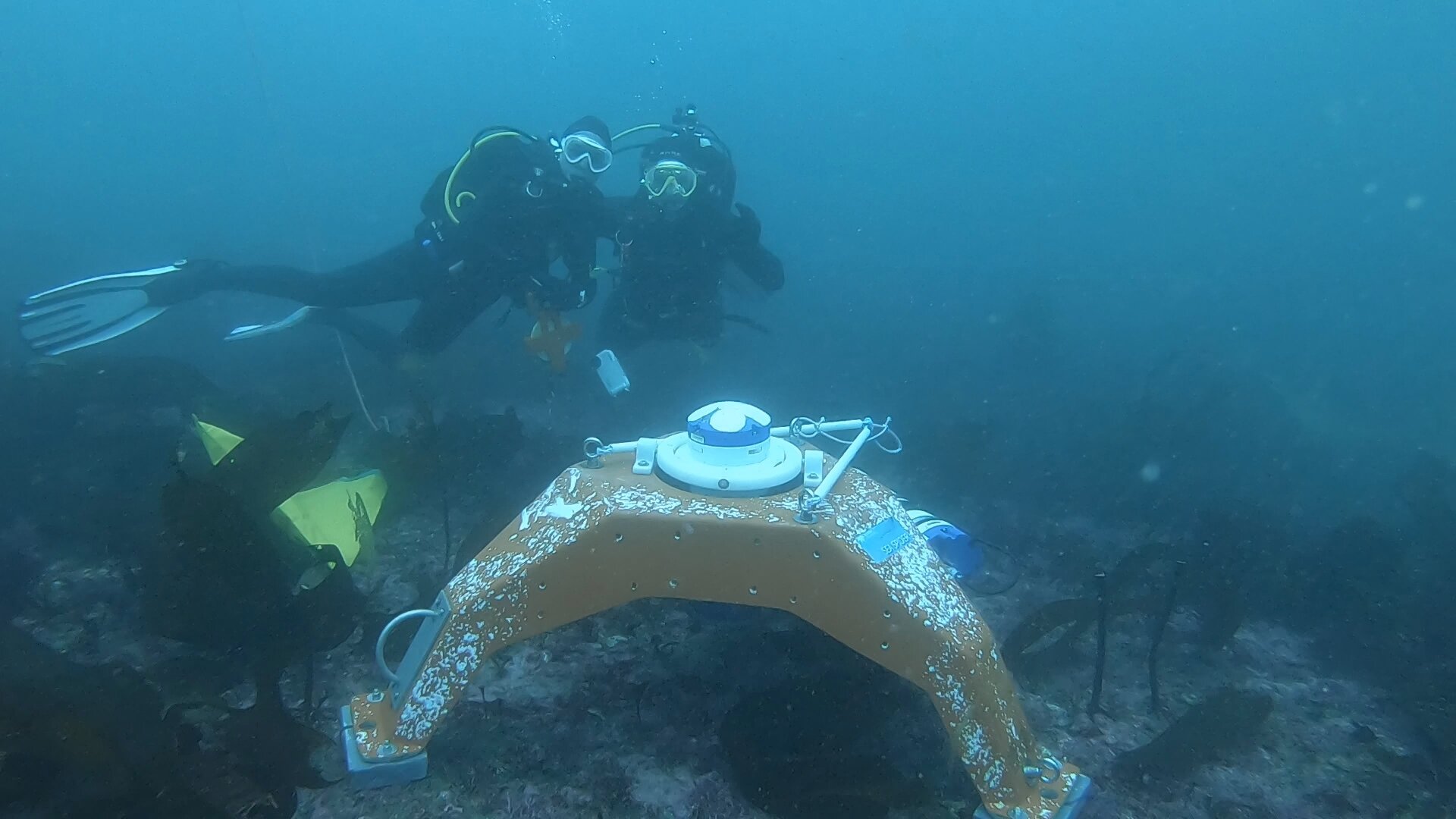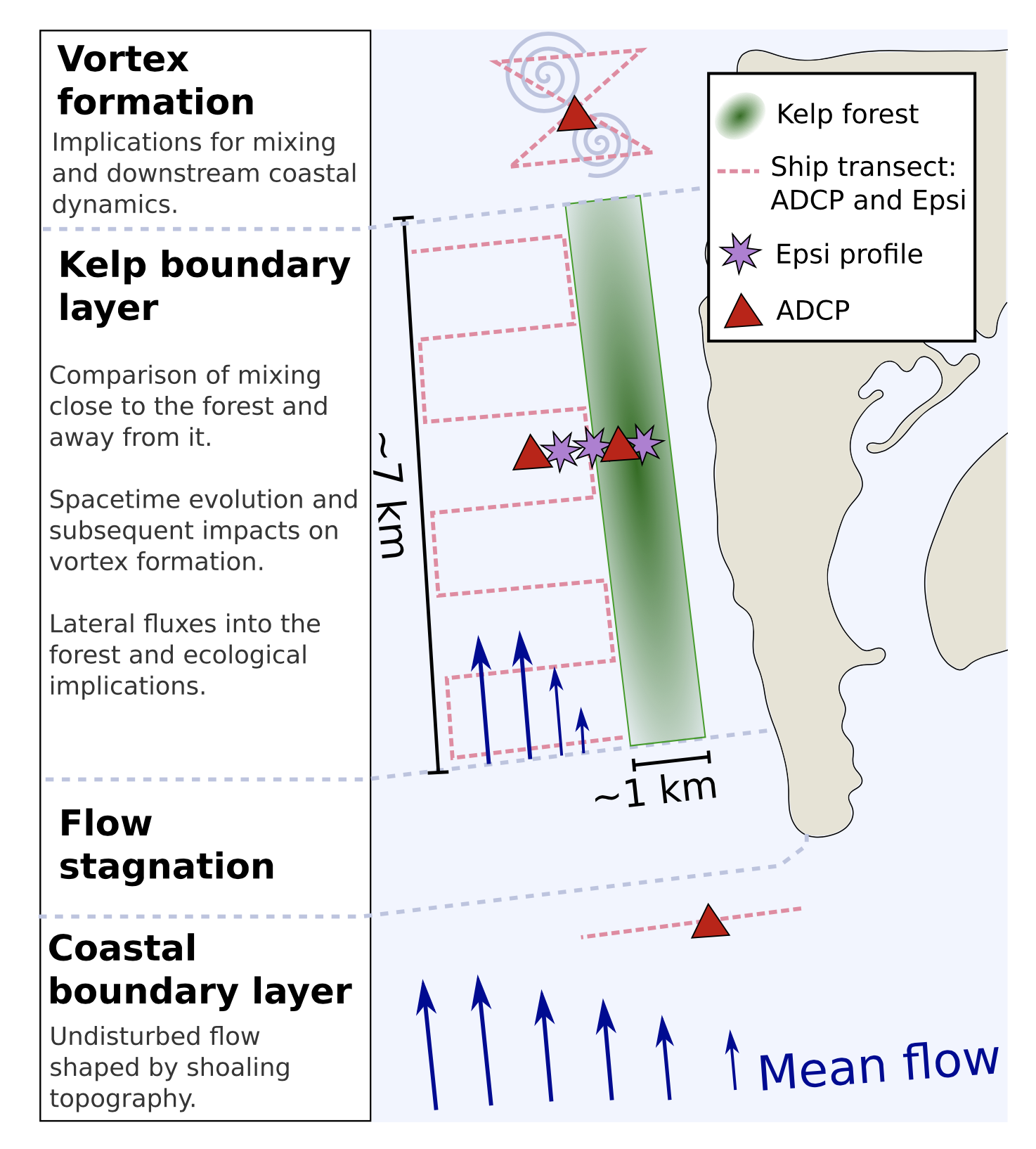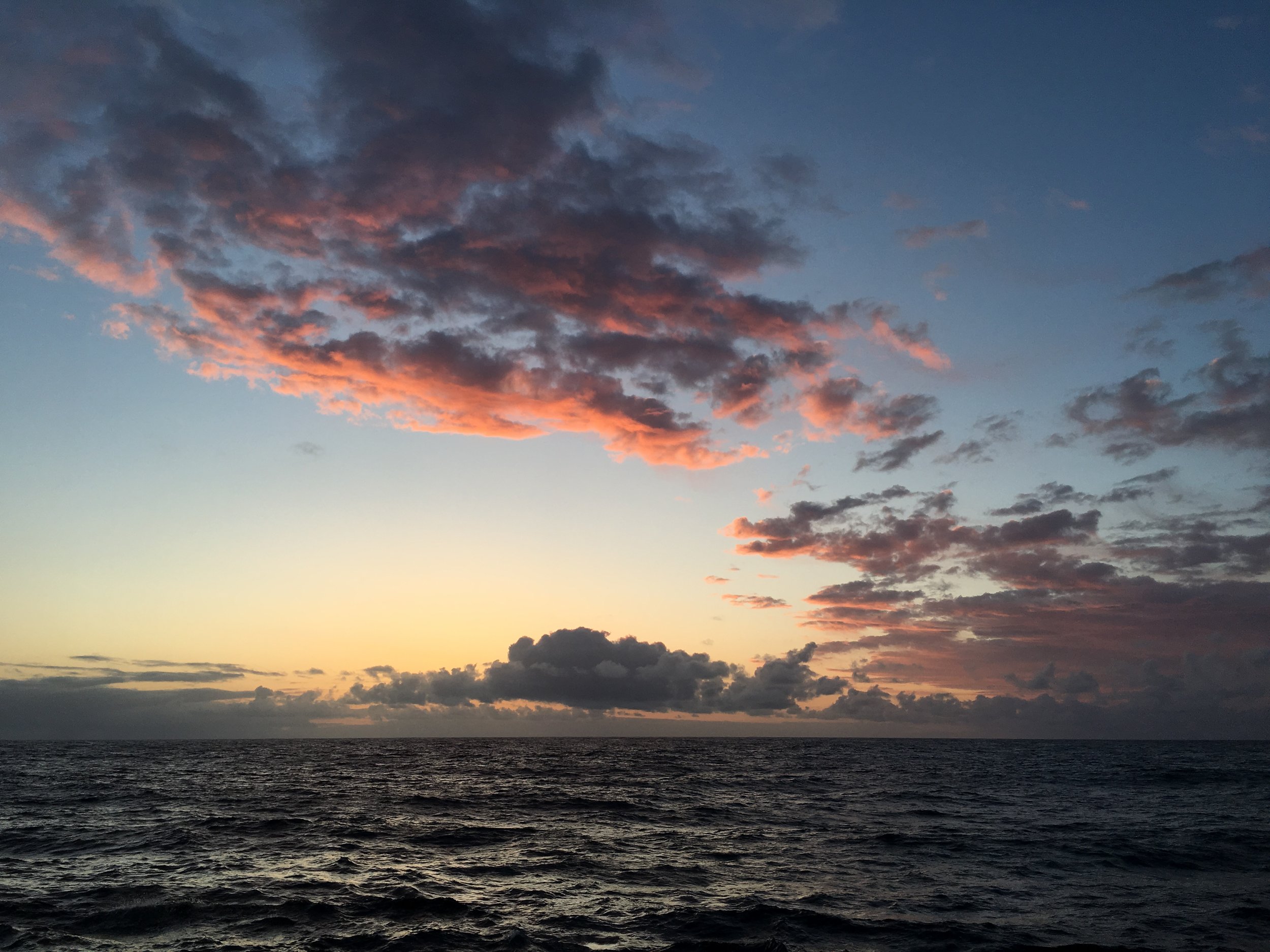122 years ago today, the US commissioned its first submarine. Today, submarines are a key aspect of national security and nuclear deterrence. The Navy funds a good part of MOD’s work, in part because our ocean understanding and measurement techniques help submarines operate more safely and effectively. As an example, MOD scientists Matthew Alford and Drew Lucas, together with a number of former Scripps students including Oliver Sun, Maddie Harvey and Adrian Doran, participated last week in a colloquium of submarine operators, acousticians and oceanographers from academia and the Navy. These collaborations are strengthening the connections between academia and the many submariners who bravely work beneath the sea surface, for whose service we are grateful.
MOD scientists in Ghana
Every August since 2015, oceanographers from around the world board flights bound for Kotoka International Airport in Accra, Ghana. Upon arrival, these scientists meet up with Dr. Brian Arbic, from University of Michigan, and local oceanography faculty at the University of Ghana to host a summer school aimed at strengthening the West African involvement in global oceanographic research.
This August, however, in the midst of the COVID-19 pandemic, Anna Savage and Drew Lucas logged in to a Zoom meeting scheduled for 3 PM Accra time (8 AM California time, which was, admittedly, a little early for Anna) and watched the participant count increase from 6 to around 50. This year, as with everything, the entirety of the oceanography summer school was transitioned to operate remotely. Through a mix of Zoom meetings, pre-recorded YouTube videos (such as Anna’s), and a collection of well organized Slack channels, instructors were able to interact with the over 250 participants over the five day event, covering topics from ocean acidification to remote sensing to the obstacles of women in STEM fields. The asynchronous lectures, hosted on YouTube and linked both in Slack and on the summer school’s website (coessing.org), were accessible to participants throughout the week, while the lecturers also hosted virtual office hours. This combination of scheduled “face-to-face” office hours and pre-recorded content provided the participants the opportunity to interact with instructors in real-time, building a sense of community, while still allowing participants to attend the summer school on their own time, something that is increasingly important as we all continue to work from home.
While the community of instructors looks forward to being in Ghana again next year, there is value in these exercises in distance learning, even when that distance spans oceans. The importance of in-person meetings is undeniable and yet, the relationships amongst the participants and instructors are built on respect and communication, not solely on proximity.
MOD students design and execute a novel kelp turbulence experiment - in a pandemic
A student-designed project to measure the flow around the Point Loma Kelp Forest kicked off this week with the successful deployment of an Acoustic Doppler Current Profiler (ADCP) within the kelp forest. The project was designed by MOD graduate students Bethan, Alex, and Noel, along with fellow graduate student Manuel Gutierrez-Villanueva, for a proposal writing and experiment design class taught by MOD PI Matthew Alford and SIO professor Uwe Send. The project investigates how the presence of vegetation affects coastal flow and the rates of turbulent dissipation outside the kelp forest and within its interior.
Through the support of UC SHIP Funds and the SIO Scientific Diving Program, operations will continue over the coming weeks with ship surveys aboard the R/V Robert Gordon Sproul to measure ocean velocity, and small-boat operations to collect the first-ever microstructure measurements within a kelp forest using the recently-upgraded epsi-fish, our microstructure profiler. The results of this project will help us understand how physical processes, important for the exchange of nutrients and spores, interact with the Point Loma Kelp Forest, the largest giant kelp bed in Southern California and home to many invertebrates, fishes, and marine mammals.
MOD graduate student and scientific diver Alex Andriatis (right) with fellow grad student Anela Akiona (left) after a successful ADCP deployment in the Point Loma Kelp Forest. Thanks to Jennifer MacKinnon and Amy Waterhouse for loaning the ADCP, and to Tyler Hughen and Paul Chua for assisting in preparing it.
We expect four different physical regimes to exist in the area surrounding the Point Loma kelp forest (detailed in left column). To observe and understand their dynamics, we designed ship transects (pink dotted lines), ADCP deployments (red triangles), and microstructure sampling stations (purple stars) around the forest’s boundaries.
An oldie but goodie from the Samoan Passage project
This video was made when Matthew was at APL/UW, but describes the science and adventure behind the Samoan Passage project pretty well.
Iceland cruise: survived
Team MOD successfully deployed two wire walkers, the fast CTD and two epsi-fish microstructure profilers in challenging conditions (up to 50 knot winds and 8-m seas) on R/V Armstrong.
We learned much about the generation of internal waves and the modulation of mixed-layer turbulence by the wind - and the effects of the wind on the ship and its scientists!
MOD PIs chair first-ever Gordon conference on Ocean Mixing
Last week, the very first Gordon conference on ocean mixing took place in Andover, NH. 167 participants from all over the world learned about the state of the art of our field and its impact on other fields. It was enlightening, inspiring and a lot of fun!
8 cruises, 5 oceans
The MOD group has been working for what seems like months now to prepare our gear for 8 cruises in 5 different oceans: The Gulf of Mexico, The South China Sea, the Arctic, the Atlantic and the Indian Ocean. We've now shipped 5 containers to various places and built several new systems that didn't exist before.
We are tired.
And so far, things are going OK.
New toys!
We had an incredibly successful test cruise of our new turbulence instrumentation last week. The team worked tirelessly to get the epsilometer working, and to design the new "epsi-fastCTD" vehicle up and running. All went well and now we can measure turbulence in several new, modular and flexible ways!
Congratulations Effie
MOD graduate student extraordinaire successfully passed her qualifying exam this week. The last hurdle to the PhD besides actually writing the thesis!
Nice work Effie.
Making a difference
MOD is inspired by Mai Bui, who wanted to help after hurricane Harvey and took the simple - but not easy - action of jumping on a plane and pitching in. In addition to spending several days packing food and cleaning up, her group raised over $14,000 for the people of Houston.
You're amazing Mai!
Mai Bui and coworkers bagging food in Houston.











